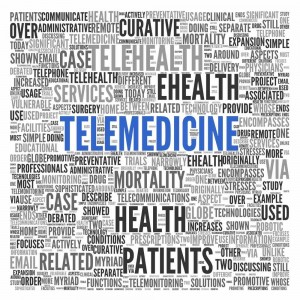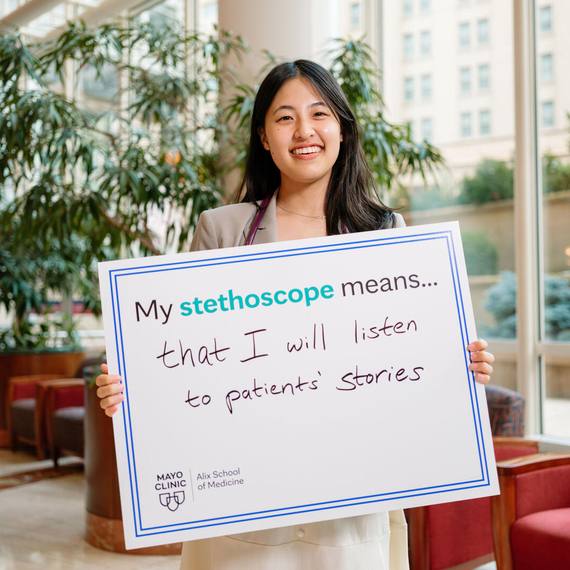CASA GRANDE, Ariz. — September 11, 2012. Pinal County residents in need of emergency medical care for a stroke may benefit from a Mayo Clinic "telestroke" program that will now be available at Casa Grande Regional Medical Center (CGRMC).

A recent agreement between Casa Grande Regional Medical Center and Mayo Clinic in Arizona means the service featuring a portable, self-propelled robot will start in Casa Grande as early as October.
Mayo Clinic pioneered clinical research in Arizona to study telemedicine as a means of serving patients with stroke in non-urban settings. Today, Mayo Clinic serves as the "hub" in a network of 10 other "spoke" centers, all but one in Arizona. Casa Grande Regional Medical Center will become the 11th hospital to be part of the telestroke service from Mayo Clinic.
When Mayo Clinic began its stroke telemedicine program in 2005, statistics revealed that 40 percent of residents in Arizona lived outside an area with immediate stroke expertise. In telestroke care, a telestroke robot located in a rural hospital allows a stroke patient be evaluated in real time by a neurology specialist at Mayo Clinic in Phoenix. The Mayo Clinic stroke neurologist, whose face appears on the screen of the robot, consults with emergency room physicians at the rural site and evaluates the patient.
Patients showing signs of stroke can be examined by the neurologist who may use a
computer, smart phone technology, portable tablets or laptops. In addition to assessing the patient, the neurologist can view scans of the patient's brain to detect possible damage from a hemorrhage or blocked artery.
A major benefit of the collaboration is that patients with stroke symptoms who meet the criteria can often be administered clot-busting medications within the narrow window of time necessary to minimize permanent injury to the brain.
"Excellent, capable emergency physicians at Casa Grande Regional Medical Center can ring the telestroke hotline and be instantly connected with Mayo Clinic's stroke experts," says Bart Demaerschalk, M.D., Professor of Neurology, and medical director of Mayo Clinic Telestroke. "Urgent and immediate virtual care can be provided to patients — collaboration between stroke neurologists and physicians at the remote sites has resulted in 96 percent accuracy in diagnosing stroke."
Rona Curphy, President and CEO of CGRMC, says, "We are proud to bring this advanced service to our community, allowing our patients the benefit of immediate evaluation in the case of a stroke without requiring them to leave our community. We know that this technology will save lives and reduce the damage a stroke patient might experience by decreasing response times. In the case of a stroke, time is a critical component and telestroke medicine buys us time for our patients."
To date, more than 1,000 emergency consultations for stroke between Mayo Clinic stroke neurologists and physicians at the spoke centers have taken place. Such comprehensive evaluation techniques, leading to appropriate life-saving treatment for stroke, have resulted in significant cost reductions in terms of ground and air ambulance transfer of the patient to another medical center.
Dr. Demaerschalk explains that telestroke robot technology is not intended to replace in person, face-to-face communication with patients.
"But our research strongly suggests that the technology can enhance evaluation and treatment for patients in rural areas, as well as peer-to-peer collaboration among physicians," he says.
At least 45 percent of Americans live more than 60 minutes away from a primary stroke center, according to estimates. If a stroke has occurred, "every minute is precious," notes Dr. Demaerschalk.
Additionally, in this first-of-its-kind U.S. health economic analysis, researchers have found that telestroke care appears to be cost-effective for rural hospitals that don't have an around-the-clock neurologist, or stroke expert, on staff. The research was published in the Sept. 14, 2011, issue of Neurology, the medical journal of the American Academy of Neurology.
The Mayo Clinic Telestroke Network also includes hospitals in Kingman, Flagstaff, Parker, Cottonwood, Show Low, Globe, Yuma, Bisbee and Phoenix, all in Arizona, and a hospital in St. Joseph, Mo.
About Casa Grande Regional Medical Center
Casa Grande Regional Medical Center is a 187-bed, not-for-profit community hospital providing full-service care to Casa Grande and the communities of western Pinal County. CGRMC also provides a full range of outpatient services, including Urgent Care coverage seven days a week from 9 a.m. to 9 p.m. and a 24-hour Emergency Department. CGRMC is a partner in healthcare, providing education and resources to the community. For more information, visit Casa Grande Regional Medical Center or call 520-381-6300.
###
About Mayo Clinic:
Recognizing 150 years of serving humanity in 2014, Mayo Clinic is a nonprofit worldwide leader in medical care, research and education for people from all walks of life. For more information, visit 150years.mayoclinic.org, www.mayoclinic.org and newsnetwork.mayoclinic.org.
Media Contact: Jim McVeigh, Public Affairs, 480-301-4222
Casa Grande Regional Medical Center: Karen Kerr-Osman, 520-381-6571, kkerr-osman@cgrmc.org








